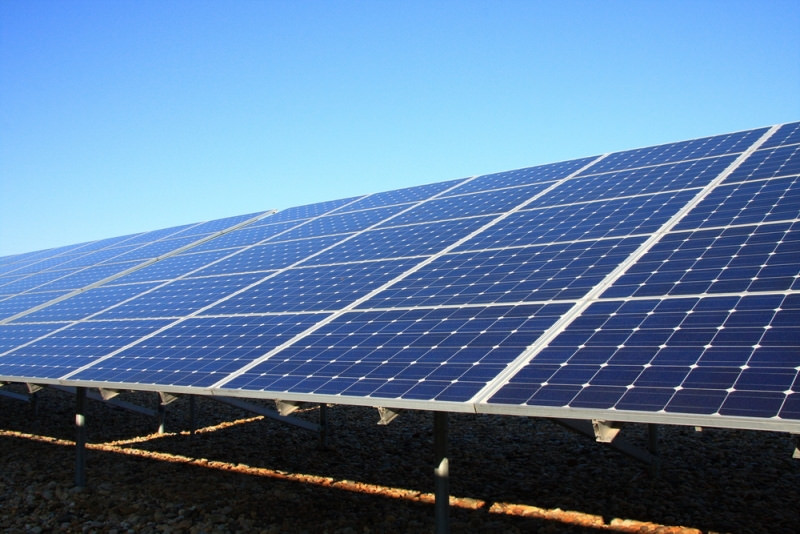With the advancement of technology, there’s been a growing shift towards harnessing more eco-friendly energy sources, resulting in solar power being developed as a resource globally. Digital innovation, especially artificial intelligence, plays a vital role in new efficiencies and innovation in solar power. Further, programs, apps, and new technologies are increasingly being made to aid in the effective running of solar plants.
In the previous setups, addressing weather conditions followed a reactive approach. They included panel rotation, dust removal, and maintenance. Everything underwent frequent manual checking, however, it was not results-driven or systems-oriented. Thus, the resulting manual effort was vague, counterproductive, and costly.
AI aims to enable precise and accurate solar irradiance forecasting along with many others as well. Other traditional techniques aim to make Nanogrid pilot projects feasible even for small systems like those that exist in households. AI Smart Energy Manager aims to operate seamlessly amongst these sources and thus, give optimized accurate data to users.
AI’s impact on solar plant efficiency
AI technology is changing the world of solar energy as it allows plants to monitor, learn and adapt in real time. Given enormous data collected from several sensors, smart meters, drones, and even weather stations, AI systems utilize machine learning algorithms to optimize performance, predict problems and even detect patterns.
In contrast to conventional software, which operates with a set of programmed instructions, AI systems rely on evolving data. With time, they become better at detecting anomalies, forecasting performances, and making operational decisions.
Predictive maintenance
Predictive maintenance is arguably AI’s most powerful feature for solar energy. AI systems are able to analyze data, in real time, looking for irregular patterns. Equipment issues like overheating inverters, and malfunctioning panels, or even a decline in efficiency in modules can be detected before they escalate into major problems.
With early identification for potential faults, operators can determine maintenance schedules at their most convenient and cost-efficient times. This enables a reduction in unexpected downtimes and an elongated lifespan for critical components. Such proactivity in approach significantly boosts reliability while also promoting a reduction in maintenance costs.
Better energy forecasts
Predictive AI can help with better solar energy forecasts, which is vital for energy grid integration. AI has the ability to analyze massive data sets which include satellite images, weather forecasts, and historical performance data, to enhance accuracy in short to long-term forecasts.
With accurate forecasts, operators can anticipate energy production accurately, adjust to fluctuations in demand, and make better decisions on the management of stored energy. Enhanced solar energy forecasts translate to discounting the chances of over-relying on non-renewable energy sources.
Optimizing performance dynamically
AI is an enabler of solar plants to optimize energy production dynamically which is a major leap in innovation. AI is now able to adjust performance based on real time data on solar irradiance, temperature, shading, and panel angles registers to ensure maximum output is achieved.
For instance, AI can control the pitch and orientation of solar panels on solar tracking systems to ensure they’re set to the right angles accorded for optimal energy absorption. This automation ensures energy yield is maximized with minimal human effort.
Drones enhance monitoring
The combination of AI, drones, and IoT equipment offers yet another dimension on the management of solar plants. AI based drones are capable of performing thermal imaging alongside visual inspections of solar panels to identify hotspots, cracks, or dirt accumulation. Such approaches speed up inspections as well as make them safer as it avoids exposing inspectors to unsafe work environments while making the inspections more exhaustive as compared to the manual ones.
AI uses the information to create reports, provide insights, and make enterprise reporting easier with the aid of AI tools and sentient reporting.
Decision support systems
The system is supervised for degree automation defined by an expert (usually an engineer). Various IoT gadgets report the functionality and fly over a specified area to collect temperature, voltage, jitter, and moisture data.
AI’s dynamism sees it enhancing the generation of solar energy, its storage, and dispensing. Based on the demand, pricing, and weather predictions, advanced algorithms can decide when it’s ideal to save excess energy and when best to push it into the grid.
Solar’s seamless grid integration is fortified through AI’s streamlining of load forecasting and demand management to prevent brand new energy resources from jeopardizing the grid’s dependability.
The road ahead
The intersection of AI technology and solar energy will grow in the future to include advancements such as fully automated solar power plants, the integration of AI for design optimization in new installations, as well as deeper connections with microgrids and smart cities.
AI also has the potential to aid in the research of solar technologies and more efficient photovoltaic cells by studying the data resulting from experiments and their performance in the field through data mining.
The views and opinions expressed in this article are the author’s own, and do not necessarily reflect those held by pv magazine.
This content is protected by copyright and may not be reused. If you want to cooperate with us and would like to reuse some of our content, please contact: editors@pv-magazine.com.








By submitting this form you agree to pv magazine using your data for the purposes of publishing your comment.
Your personal data will only be disclosed or otherwise transmitted to third parties for the purposes of spam filtering or if this is necessary for technical maintenance of the website. Any other transfer to third parties will not take place unless this is justified on the basis of applicable data protection regulations or if pv magazine is legally obliged to do so.
You may revoke this consent at any time with effect for the future, in which case your personal data will be deleted immediately. Otherwise, your data will be deleted if pv magazine has processed your request or the purpose of data storage is fulfilled.
Further information on data privacy can be found in our Data Protection Policy.